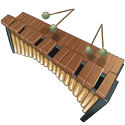|
Would this be a good thread to get some feedback on my musical notation? I first posted in the home recording megathread, and Jazz Marimba gave me all kinds of helpful advice, but I think this might be a more natural place for it. I've begun to score my own songs for the first time in my adult life and I know I'll probably be making a whole bunch of dumb mistakes along the way. Fortunately the forums seem to live for another day so that I can recruit the aid of goons to make me look like a genius.
|
|
|
|

|
| # ? Apr 23, 2024 11:58 |
|
sure. also feel free to pm me
|
|
|
|
Great! Thanks so much again for your help, it's saved me a ton of hours from figuring out stuff on my own. Even with the aid of notation software, writing music takes me ages to write. I am so slow.  My Body score and MIDI. Awake! Dear Heart revised score and MIDI. exquisite tea fucked around with this message at 01:39 on Jun 28, 2020 |
|
|
|
exquisite tea posted:My Body score and MIDI. Iíve had a rough weekend so no mockups, but So this is gonna be something youíve heard me say before, but beam to the beat. This in 6/8, so the 8th note gets the beat/is the beat you wanna show. Since 6/8 is felt in two halves (ONE two three FOUR five six), you can group three eighth notes together. You can see this m64 in the voice parts. In m65 you can beam over the rest to make this measure division clear, same in the drum part throughout With drums you also want to use there largest note value to fill up the remaining value of the beat, so e.g. in m64 the 16th notes on 1, 3, and 6 can be 8th notes drums m105 remove the hi hat on beat 1ócrashes replace the note in the time ostinato (in this case the 8th notes on hi hat) m106-107 dynamics (the decrescendo here) go above the staff for vocal parts so they donít collide with lyrics, but below the staff for everything else m109 it looks like what youíre going for is a snare pickup into a hit on beat 4. if so, the first two snare notes should be grace notes before the hats and snare on 4ĖI would remove the tom since itís impossible (three notes played with hands), and the snare sounds better imo. all the notes in the last three measures can be dotted quarters Iíll look at the other one later
|
|
|
|
Thank you! Sorry to hear about your bad weekend. You really don't have to go through the trouble of posting images, I think I know enough to just go by the descriptions. It's a little difficult for me to intuit the barring for vocals. Logically I understand why it makes sense, since any instrumentalist or drummer would want to see exactly where the beat lands, but as a singer it's confusing to me sometimes. It would make more intuitive sense for me to imagine "triplet with a little bit of a lilt to it" than to see tied sixteenth notes everywhere. Not questioning your wisdom, just explaining why I keep doing it!
|
|
|
|
Apologies for my lovely notation, I have no real training, but I was hoping someone here could help me resolve a chord progression into a decent chorus? I'm working on kind of a disco-y, song. Verse is 2 measures each of am-fm-cmaj then 1 measure each of bmaj-emaj "Pre-chorus" is 2 measures each of dmin-cmaj Not really sure how to resolve it :/
|
|
|
|
Yeah hmmmm idk either, I just tried playing it and it doesn't seem to have a direction it goes in. That f minor chord seems really out of place to me too.
|
|
|
|
If you change the Fmin to Fmaj you've basically got You're Welcome from Moana. It's the standard 4 chords from two thirds of pop music. Adding the Bmaj is just a V of V which further strengthens the Emaj as the dominant. The Dmin-Cmaj personally draws me right back to Amin. I'm just throwing something out here which may or may not be what you want: Either replace the Cmaj in the pre-chorus with Gmaj, or add four measures of Gmaj after the Dmin-Cmaj, and go to a Cmaj to start the chorus. Basically this modulates from Amin to the relative Major, Cmaj. Then knock yourself out with a big happy Cmaj chorus and modulate back to Amin with something like a Gmaj or Emaj. Go extra with a Gmaj-G#dim at the end of the chorus to start the next verse with Amin. Mmm. Konsek fucked around with this message at 00:40 on Jul 6, 2020 |
|
|
|
Just realized I actually was already playing an fmaj and just transcribed incorrectly. Oops. I'm noodling around now but it seems.to make sense to get that gmaj in at the end of the pre-chorus to get me to c. I'll put up a recording when I have it worked out!
|
|
|
|
I'm trying "Fundamentals of Musical Composition" and some of the concepts and terminology seem completely beyond me, even from the first few pages. ("The distinction between a transient modulation and chromatic harmony...") Is there a primer for dumb newbs like me, or do I just need to wade through the text and tough it out?
|
|
|
|
sorry op, i havent read it before. but i thought it would be funny to recommend this to you as a joke:
|
|
|
|
PlatinumJukebox posted:The distinction between a transient modulation and chromatic harmony... idk what it means either, but i wouldnt worry about it too much i hope i dont lose any friends saying this...... i would suggest just using that book as a reference, and to go read something else instead the reason i say that? i dont think people generally power all the way thru that book, i think they read excerpts from it as needed. there are more modern college textbooks that will get you up to speed without the archaic terminology. but i didn't go to school for music, and i'm no great composer. so I will let someone else make a recommendation. before you go to power all the way thru this book.. go listen to some of Arnold Schoenberg's music. if you dig that sound, and you want to make similar music, it makes sense to power thru his books. if you have different tastes? it might make sense to read a text that's more aligned with your musical goals. instead of Schoenberg's book, i chose to read "The Jazz Theory Book" by Mark Levine for that reason. i feel like i got a lot out of it
|
|
|
|
PlatinumJukebox posted:"The distinction between a transient modulation and chromatic harmony...Ē To me this seems to be saying ďThe distinction between briefly changing key and using chromatic movement while remaining in the original key.Ē Which seems to be two frameworks for understanding harmonies which use chords outside of the key.
|
|
|
|
Helianthus Annuus posted:"The Jazz Theory Book" by Mark Levine Thanks for the advice, I do like Schoenberg's music but I like jazz a lot so I might use that book as consolidation. The Super-Id posted:To me this seems to be saying “The distinction between briefly changing key and using chromatic movement while remaining in the original key.” Which seems to be two frameworks for understanding harmonies which use chords outside of the key. Thanks, that makes sense. On an unrelated note, I've been thinking about the progression from "Just the Two of Us" (something like VI7-V7-i7-vii7-III7) - is the VI7 borrowed from the relative major? I've studied a bit of harmonic function, but I don't really know how the 'borrowing' stuff works. Sorry if I've gotten something wrong.
|
|
|
|
PlatinumJukebox posted:On an unrelated note, I've been thinking about the progression from "Just the Two of Us" (something like VI7-V7-i7-vii7-III7) - is the VI7 borrowed from the relative major? I've studied a bit of harmonic function, but I don't really know how the 'borrowing' stuff works. Sorry if I've gotten something wrong. looks like you have an E minor tonic in your analysis. and when you have a natural minor tonality, you're supposed to flatten the chords' roots on the 3rd, 6th, and 7th degrees. so instead of III, VI, and VII, you're supposed to say bIII, bVI, and bVII. otherwise, i can't tell if we are in natural minor, melodic minor, dorian, or what! to answer your question, the bVI chord is diatonic to natural minor, it doesn't need to be borrowed. E.g., C major is the bVI chord in the key of E minor. Or if it helps to think of the same chords in the relative major key, G major, then C would be the IV chord, and Em would be the vi chord. but some of the other chords in this progression are chromatic. lets dig in! anyway here are some chords i stole from ultimate guitar (its transposed from the original key for capo users) https://tabs.ultimate-guitar.com/tab/bill-withers/just-the-two-of-us-chords-1095786 with E minor as the tonic, as you have it: C bVI B7 V (chromatic to E natural minor, but diatonic to E harmonic minor. E natural minor has the minor v chord) Em i Dm bvii (chromatic. diatonic would be bVII) G bIII C bVI or if you want to analyze it from the perspective of the relative major, G major, instead of E minor (this one is my least favorite analysis) C IV B7 III (chromatic. possible secondary dominant, V of vi) Em vi Dm v (chromatic. diatonic would be V. borrowed from parallel G natural minor?) G I C IV or if you want to analyze it from the perspective of C major instead of G major (this one is my favorite analysis) C I B7 VII (chromatic. possible secondary dominant, V of iii) Em iii Dm ii G V C I then i guess this is happening in the bridge: Cmaj7 B7 A#maj7 A7 G#maj7 G7 Cmaj7 F13 so what is that in C major? I VII7 bVII VI7 bVI V7 I IV7? pretty chromatic poo poo going on here, the roman numerals don't do much to elucidate but it looks like its just chromatic descending bass line with some voice leading between the inner voices, then once it gets to the G chord, it cadences back to the C chord, which briefly goes to F before starting over from C anyway I like to analyze it from the perspective of C major as the tonic, because it really makes clear the ii V I changes happening at the end of the phrase, and you only need to mark one chord as non-diatonic (B7). but just because that analysis is cleaner, doesn't mean that it has to FEEL like it's in C. it's just a useful perspective IMO
|
|
|
|
PlatinumJukebox posted:On an unrelated note, I've been thinking about the progression from "Just the Two of Us" (something like VI7-V7-i7-vii7-III7) - is the VI7 borrowed from the relative major? I've studied a bit of harmonic function, but I don't really know how the 'borrowing' stuff works. Sorry if I've gotten something wrong. parallel major*. relative major is the same pitches (and therefore the same chords), but starting on a different note (A minor and C major). parallel major is starting on the same note (so being in A minor and borrowing chords from A major) putting it in A minor, the progression is Fmaj7 E7 A-7 G-7 Cmaj7. Fmaj7 is F A C E, all notes in A minor that E7 though? E G# B D. the G# isnít in the key, so the chord is borrowed. the E7 is borrowed from A major, which is super common because the V- chord in A minor has a weak resolution to the I, and V7 has a strong resolution to it edit: lol i shoulda scrolled down further before hitting quote, woulda saved me the effort Jazz Marimba fucked around with this message at 18:37 on Jul 29, 2020 |
|
|
|
consider the practice of using a dominant V chord instead of a minor v chord in a minor key.... is it appropriate to call that a secondary dominant? or do we need to treat it as a special case, and relate it back to harmonic minor vs natural minor?
|
|
|
|
Helianthus Annuus posted:consider the practice of using a dominant V chord instead of a minor v chord in a minor key.... itís a special case that came about over a century (more? iím not a classical musician, let alone a classical historian/theorist) before secondary dominants.
|
|
|
|
Helianthus Annuus posted:looks like you have an E minor tonic in your analysis. and when you have a natural minor tonality, you're supposed to flatten the chords' roots on the 3rd, 6th, and 7th degrees. so instead of III, VI, and VII, you're supposed to say bIII, bVI, and bVII. otherwise, i can't tell if we are in natural minor, melodic minor, dorian, or what! Oh man, I had it all completely wrong... Thanks for clarifying, it makes a lot more sense with C as the tonic. And I didn't know about the other stuff (natural/harmonic minor, notation etc), sorry for bungling it all so badly. Jazz Marimba posted:parallel major*. relative major is the same pitches (and therefore the same chords), but starting on a different note (A minor and C major). parallel major is starting on the same note (so being in A minor and borrowing chords from A major) I meant relative major, but I was also reading the whole sequence completely wrong (thought the Fmaj7 was borrowed as the IV from C major to make a IV-V-i type thing... seems stupid in hindsight) and was way off mark. Didn't know about the borrowing from parallel major, thanks. Thank you both for your help and your patience. Sorry again.
|
|
|
|
PlatinumJukebox posted:Oh man, I had it all completely wrong... Thanks for clarifying, it makes a lot more sense with C as the tonic. And I didn't know about the other stuff (natural/harmonic minor, notation etc), sorry for bungling it all so badly. yw, hth there are plenty of people out there who think i'm being needlessly pedantic when i insist on bIII bVI and bVII instead of III VI and VII in a minor key obviously i disagree with them, but the point of all this is to better communicate with other musicians, so even if i think it's wrong, its good to understand how to work with that notation one musician i know (outstanding bass guitar player and multi-instrumentalist) refuses to use lower case roman numerals, so he actually writes bIII when he means iii. ...WHAT? i always try to bypass the controversy and analyze songs from the perspective of a major key, just to make it more obvious what's diatonic and whats chromatic
|
|
|
|
When I read about triads, there's the major, minor, augmented & diminished. Why aren't sus2 and sus4 counted as triads?
|
|
|
|
Triads are built by stacking intervals by thirds, and sus2 and sus4 replace one of those third intervals with a second or a fourth respectively.
|
|
|
|
heres something i should have known already, but i just learned a minute ago: sus2 and sus4 chords are inversions of each other and both chords will also invert to a quartal chord (stacked perfect 4ths)
|
|
|
|
have any of you read schoenberg's Structural Functions of Harmony, the examples included look insane out of context. esp this one about diatonic chords in major
|
|
|
|
Logflat Badness posted:have any of you read schoenberg's Structural Functions of Harmony, the examples included look insane out of context. esp this one about diatonic chords in major ive seen this notation before, but havent read the book, sorry i think it helps to see what the abbreviations stand for, and it helps to see what everything is in the context of C major 
|
|
|
|
So this is more of a question of the theory of playing a piece since 90% of what I know about playing the flute is self taught and the weird thing about this forum is that someone is probably a world-reknowned Bachologist. I noticed that when many flutists play Partita in A Minor they over-emphasize to dramatically over-emphasize many-but-not-all the starting note on the beats. It creates a lurching effect that is pretty cool to me but also really noticeable. To me some of the pauses sound like what I do when I am not mentally ready for a fingering change. Is it just HOW IT'S DONE? Classical flute thought seems to be extremely conservative even by the standards of classical players. You should see them lose their poo poo when someone starts using effects or plays a Dvorak piece not exactly the way it's written. Alternately is it just the embouchure change to hit the low note and continue? Breathing? https://www.youtube.com/watch?v=Datoqxx-biw NC Wyeth Death Cult fucked around with this message at 17:05 on Oct 4, 2020 |
|
|
|
NC Wyeth Death Cult posted:So this is more of a question of the theory of playing a piece since 90% of what I know about playing the flute is self taught and the weird thing about this forum is that someone is probably a world-reknowned Bachologist. are you talking about how the flutist in this recording holds the bass note of each arpeggio for a little bit longer than what's written? i.e., the written notes are supposed to be the same length, but that's not what we hear in the recording idk enough about flute or classical music to comment intelligently. i hope someone more knowledgeable can answer you my guess is that this is just "Tasteful Phrasing" on the part of the flute player. i bet it would fatigue the listener if all the notes were played with the exact same duration, like you might get from a MIDI playback (just listened to the MIDI, can confirm lol)
|
|
|
|
Helianthus Annuus posted:are you talking about how the flutist in this recording holds the bass note of each arpeggio for a little bit longer than what's written? i.e., the written notes are supposed to be the same length, but that's not what we hear in the recording Yes, exactly. Sorry if it wasn't clear. I agree that an endless run of sixteenth notes would get tedious/etude-ey so I am wondering if it evolved like that or was originally meant that way and also if there's a "right way" to do it. I'd also imagine a dotted sixteenth note and 32nd note would be a pain in the rear end to notate.
|
|
|
|
This is kind of a lovely answer but basically in Baroque and Classical times there were a whole bunch of ornaments that were unwritten but commonly understood to belong in certain places based on context clues and poo poo. Some of them are the same ones we use today, but there were a couple unique ones. (Side note, listening to modern attempts to reproduce Baroque vocal ornamentation is super interesting.) Writing in articulations in sheet music generally wasnít a thing until the Romantic era/late Classical. 99% of the printed music from eras prior to that have been edited. This is also why the flutist in that performance is using slurs where none are written. Anyway I donít actually know if itís based in historical research or not but itís pretty common to interpret the first note of each beat, especially downbeats, to be tenuto (meaning held just a hair too long to give extra emphasis). And then furthermore flutists specifically are super into extra tenuto-ing their tenuto-ing. Like Iíve never heard a trumpet player stretch em out like that. My understanding is in Baroque times your choice of articulation and ornamentation were part of your job as a performer. It seems a bit analogous to actors bringing scripts to life. Yeah you gotta play the notes, but how?
|
|
|
|
Hawkperson posted:This is kind of a lovely answer but basically in Baroque and Classical times there were a whole bunch of ornaments that were unwritten but commonly understood to belong in certain places based on context clues and poo poo. Some of them are the same ones we use today, but there were a couple unique ones. (Side note, listening to modern attempts to reproduce Baroque vocal ornamentation is super interesting.) Writing in articulations in sheet music generally wasnít a thing until the Romantic era/late Classical. 99% of the printed music from eras prior to that have been edited. This is also why the flutist in that performance is using slurs where none are written. This is an amazing answer and makes a lot of sense. Thank you.
|
|
|
|
Sometimes as well if it's a piece written for an instrument like a harpsichord, an instrument with few dynamics and a very percussive sound that tends to make longer notes have short articulations, moving it to another instrument that has different features means that you want to show off the original instrument's characteristics in some way. Also literally all of the 4 movements titles are dances (Allemande, Corrente, Sarabande, Bourrťe angloise) if you play 16th notes without emphasizing the 1st beat it's kind of hard to dance to it. Even if it's a solo piece and removed from it this today, it was written as if they were danced to. Like this is kind of a quick simple thing on that. https://www.youtube.com/watch?v=kNgRHCcTvNU
|
|
|
|
Does anyone have recommendations for studying melodic dictation? Dictation is probably my worst skill in my musicianship class and I really need to step up practice methods.
|
|
|
|
Weird BIAS posted:Also literally all of the 4 movements titles are dances (Allemande, Corrente, Sarabande, Bourrťe angloise) if you play 16th notes without emphasizing the 1st beat it's kind of hard to dance to it. Even if it's a solo piece and removed from it this today, it was written as if they were danced to. Thank you! This also helps me with a couple klezmer pieces I've been learning on clarinet.
|
|
|
|
The Sheriff Jake posted:Does anyone have recommendations for studying melodic dictation? Dictation is probably my worst skill in my musicianship class and I really need to step up practice methods. depends.. whats hard for you? interval identification? rhythm notation? whenever i have to transcribe something, i try to mimic the sound on my guitar before writing anything down. what do they make you do in musicianship class? can you use your instrument to help you? NC Wyeth Death Cult posted:Thank you! This also helps me with a couple klezmer pieces I've been learning on clarinet. i also play the clarinet
|
|
|
|
Helianthus Annuus posted:depends.. whats hard for you? interval identification? rhythm notation? I feel like I lose the Do in my head when theres a leap bigger than a third and from there I am just lost. Knowing the pitches is the hard part. My rhythmic dictation is getting better its matching the pitches that kills me. My teacher just plays a melody on the piano or guitar and we just have to write it down on the staff. No help from an instrument.
|
|
|
|
The Sheriff Jake posted:I feel like I lose the Do in my head when theres a leap bigger than a third and from there I am just lost. Knowing the pitches is the hard part. My rhythmic dictation is getting better its matching the pitches that kills me. My teacher just plays a melody on the piano or guitar and we just have to write it down on the staff. No help from an instrument. if you cant use an instrument, try singing these songs to yourself to check what interval something is https://en.wikipedia.org/wiki/Interval_recognition i used to use an android app to quiz myself on interval recognition, while riding the train to work. i think it helped.
|
|
|
|
My goal is to make a cheatsheet for myself for guidetones to help me learn them as I walk through lead sheets. Do I have anything badly misunderstood about common jazz voicings so far, before I continue? e: or if a chart like this already exists and I just couldn't google it, maybe even arranged in a better way. Huxley fucked around with this message at 19:21 on Oct 21, 2020 |
|
|
|
Huxley posted:My goal is to make a cheatsheet for myself for guidetones to help me learn them as I walk through lead sheets. Do I have anything badly misunderstood about common jazz voicings so far, before I continue? i'd get rid of the perfect 5ths, (e.g., for C major, just show E, and lose the G). maybe make a new chord called "C5" and then list the perfect 5th "G" there you have "sus" here, and that looks like a sus4. there's also sus2 to consider in the C7#9 chord, you show the major 3rd (E) and the minor 3rd (Eb). more correct would be to show it as D#, so you don't have two "E" notes in there. you might also decide to go hod wild and add C7b9, C7#11, etc etc. until you have all the available extensions for a dominant chord. might be more trouble than it's worth, depends on your needs in the bottom section, where it says what you can sub and what you cant? it says not to sub diminished or augmented chords. but you can play a major or minor chord over either of these as long as you drop the perfect 5th (so it doesn't fight with the flat 5 or sharp 5 in the dim or aug chord) same idea for the major 6th and minor 6th chords. if you play a major or minor chord, drop the perfect 5th (or keep it, if you really want it), and don't play the 7th, you should be able to slide right in there Helianthus Annuus fucked around with this message at 19:55 on Oct 21, 2020 |
|
|
|
when im reading chords on a lead sheet, and trying to solo, my main concern is avoiding the notes which are being contraindicated by the chord symbol for instance, on a C major chord, don't play the minor 3rd (Eb), because there's gonna be a major 3rd present (E), and these notes are gonna fight unless you take care with the voicing. or, in this specific example, go ahead and play it if you want to sound Bluesy its worth saying here that on a C minor chord, you're REALLY supposed to avoid that major 3rd (E), because it won't sound bluesy, like in the above example. Its just gonna sound like you don't know what you're doing lol. (unless, of course, you take care with the voicing to space these notes out) same idea for a Cmaj7 chord. in addition to not playing the minor 3rd, you're supposed to avoid the flat-7 (Bb) too. because there's gonna be major 7 (B) present, and these notes are gonna fight for C augmented and C diminished chords, its crucial to avoid the perfect 5th (G), because its going to fight with the flat-5 (Gb) or sharp-5 (G#) for a C dominant chord, all options are on the table. but the presence of a #9 (D#) or a b9 (Db) in the chord symbol may preclude the natural 9 (D), depending on how much dissonance you wanna have.
|
|
|
|

|
| # ? Apr 23, 2024 11:58 |
|
The idea behind this is, I've fallen in love with the bass. My wife is a good piano player but not used to playing off lead sheets (or at least lead sheets with jazzy extensions, she's a church music director and does a lot of traditional and contempo pop). So in trying to make it work without putting too much of a burden on her, I'm going through songs and working out the left hand tones/walking inversions for the time being. She's having fun, so I'm sure all this will sink into muscle memory if we keep at it, but I'm just giving myself a cheat sheet so when I come across ii-V-Is in C# or whatever I can pull out my handy reference instead of having to work through it in my head every time. With the side benefit of me learning it, too, eventually. e: this is all really good info. I'm working through the best sounding way to blend a bass/piano/drum machine into some fun living room noodling and the more info I have the better I can lead her through it. She's a good player, but this is very much my thing and lord knows she does plenty around here without me also asking her to learn jazz from scratch. Thank you! Huxley fucked around with this message at 19:54 on Oct 21, 2020 |
|
|





















